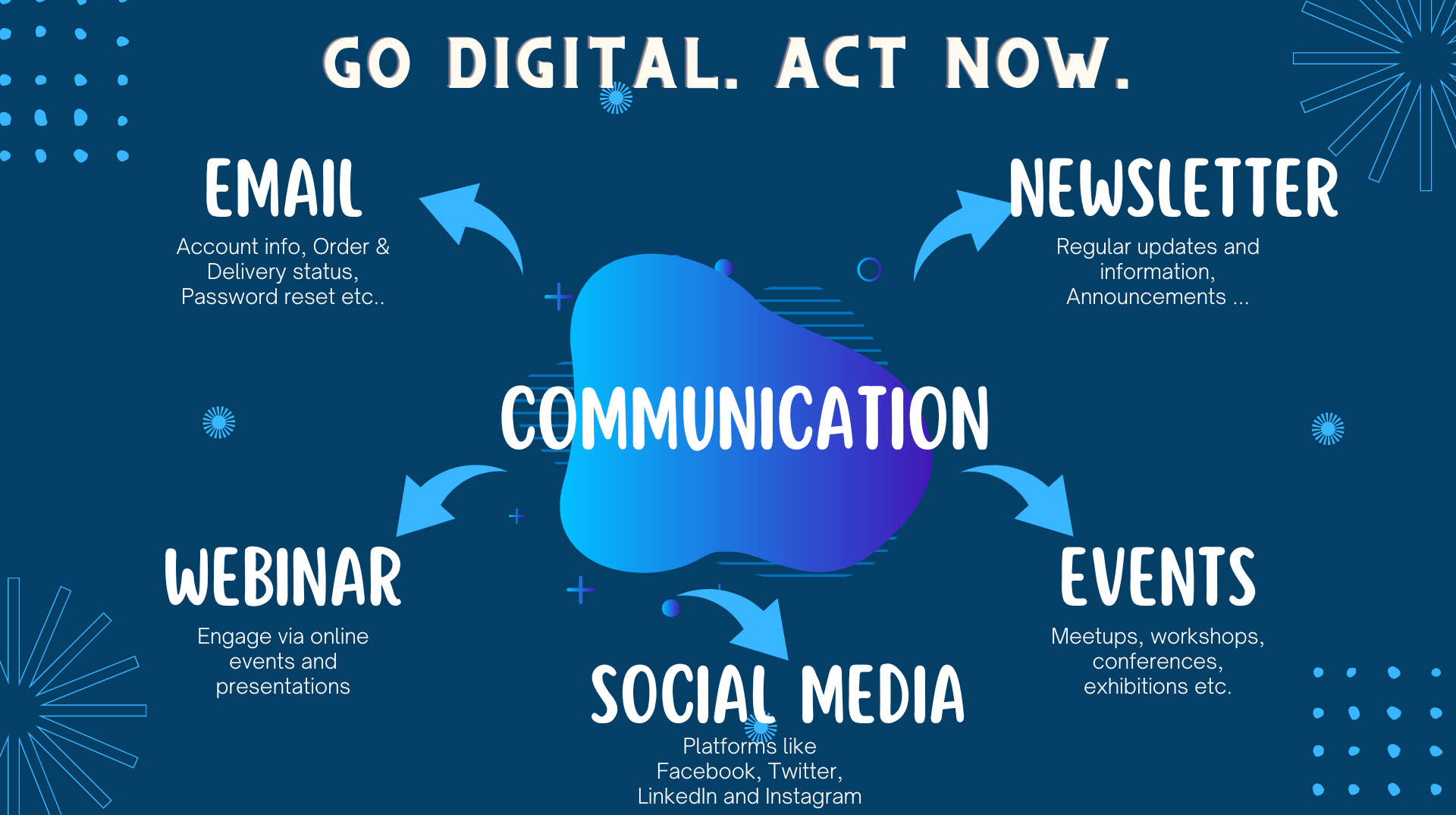
04 Jan Best 5 ways of digital communication with your communities
Posted at 05:18h
in Business, Communication, Learning Management System, Transactional Email, Virtual Events
[social_share]
- Email: Email is a widely used and effective way to communicate with members of your community. It allows you to send updates, announcements, and other information to a large group of people in a relatively short amount of time.
- Newsletters: Newsletters are a great way to send regular updates and information to your community. You can use readymade tool like to create and send newsletters to your subscribers.
- Webinars: Webinars allow you to host online events and presentations, which can be a great way to engage with your community and provide valuable information.
- In-person events: Depending on the size and nature of your community, hosting in-person events can be a great way to build relationships and foster a sense of community. This could include meetups, workshops, conferences, or other events.
- Social media: Platforms like Facebook, Twitter, LinkedIn and Instagram allow you to share updates, engage with followers, and build your community.
All the above channels are extremely helpful in reaching and communicating with customers, prospects, employees, vendors etc. There is a key difference between the first four vs social media:
- Audience: The first 4 channels allow you to send messages directly to a list of subscribers, while social media allows you to reach a wider audience through your followers and through paid advertising.
- Ownership: With the first 4 channels, you own the list of subscribers and have full control over the content and frequency of your messages. On social media, you don’t have as much control over who sees your content and when, as the platform’s algorithms determine what is shown in users’ feeds.
- Personalization: The first 4 channels allow for more personalization, as you can segment your list and send targeted messages to specific groups of subscribers. Social media is less personalized, as you are unable to segment your audience as easily.
- Timing: The first 4 channels allow you to send messages at any time, while the timing of your social media posts may be limited by when your audience is most active on the platform.
- Measurement: All the channels offer ways to track the success of your campaigns, but first 4 channels tend to offer more detailed and specific and detailed metrics.


